 "ttyymmnn" (ttyymmnn)
"ttyymmnn" (ttyymmnn)
03/23/2018 at 12:35 • Filed to: wingspan, planelopnik history, Planelopnik
 13
13
 4
4
 "ttyymmnn" (ttyymmnn)
"ttyymmnn" (ttyymmnn)
03/23/2018 at 12:35 • Filed to: wingspan, planelopnik history, Planelopnik |  13 13
|  4 4 |
!!! UNKNOWN CONTENT TYPE !!!
Welcome to
This Date in Aviation History
, getting of you caught up on milestones, important historical events and people in aviation from March 21 through March 23.
!!! UNKNOWN CONTENT TYPE !!!
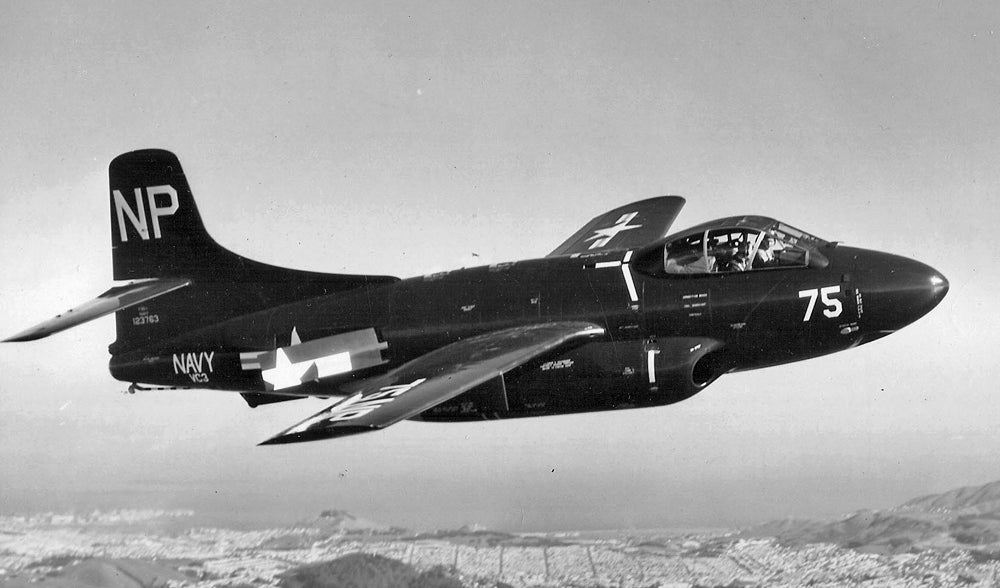
US Navy
March 23, 1948 – The first flight of the Douglas F3D Skyknight. Today, modern jet fighters with powerful radars are capable of locating and destroying enemy targets day or night and in all types of weather. But in WWII, radar tracking systems were in their infancy, and special night fighters were developed to carry the early radar sets aloft and seek out enemy aircraft. This specialization continued after the war and into the jet age, and the designations of day fighter and night fighter continued as well.
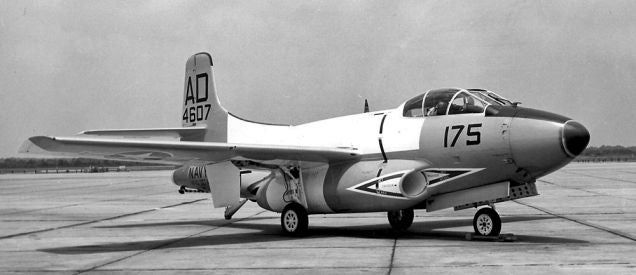
F3D-2T2 Skyknight from VF-101 “Grim Reapers” used for radar operator training and electronic warfare (US Navy)
In 1945, the US Navy issued a requirement for a jet-powered, radar-equipped night fighter that would be capable of operating from aircraft carriers. They accepted proposals from Grumman and Douglas, and the Douglas offering was awarded a development contract on April 3, 1946. Unlike the Grumman proposal, which featured four engines, lead designer !!!error: Indecipherable SUB-paragraph formatting!!! and the team at Douglas created a twin-engine fighter built around two !!!error: Indecipherable SUB-paragraph formatting!!! housed in nacelles nestled along the side of the fuselage. Following standard postwar design practices, the Skyknight had straight wings and tail, and the J34 engines gave it a top speed of 565 mph. The F3D was the Navy’s first two-place jet and the pilot and radar operator sat side-by-side in a large cockpit, but they had no ejection seats. In case of emergency, the crew would exit the aircraft through an escape chute and drop out of the bottom of the aircraft, similar to the system that would later be used on the !!!error: Indecipherable SUB-paragraph formatting!!! . The Skyknight also carried a total of three radars. Two were housed in the bulbous nose, with one acting as a search radar and the other as a tracking radar. The third radar was located in the tail to alert the crew to attacks from behind during night missions. Once the enemy was targeted with the attack radars, the Skyknight crew could engage it with four 20mm cannons, rockets, and eventually !!!error: Indecipherable SUB-paragraph formatting!!! air-to-air missiles.
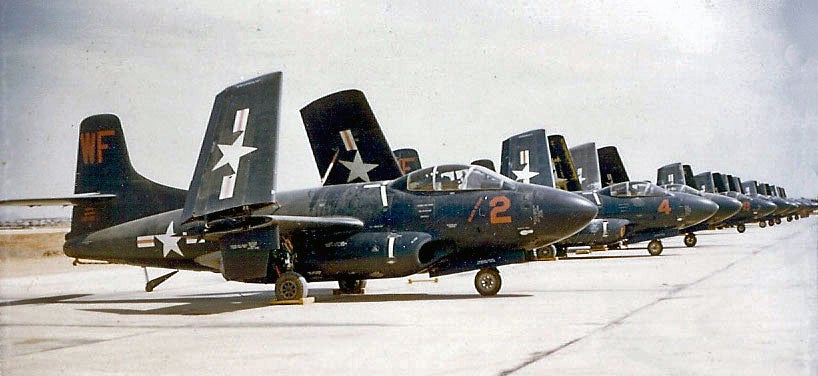
U.S. Marine Corps Douglas F3D-2 Skyknights of Marine Night Fighter Squadron VMF(N)-513 “Flying Nightmares” parked on the flightline, circa 1952 (US Navy)
While the F3D (later !!!error: Indecipherable SUB-paragraph formatting!!! F-10) was never designed to be a dogfighter, it’s handling capabilities were still quite good, and it could could even out turn the Soviet !!!error: Indecipherable SUB-paragraph formatting!!! . Though originally designed as a carrier fighter, the US Marine Corps operated the upgraded F3D-2 Skyknight from land bases during the Korean War, usually in support of nighttime bombing missions and, on November 2, 1952, Marine Corps pilot Maj. William Stratton and radar operator MSGT Hans Hoglind of !!!error: Indecipherable SUB-paragraph formatting!!! claimed the first ever nighttime radar-led kill of one jet by another when they claimed to have shot down a North Korean !!!error: Indecipherable SUB-paragraph formatting!!! . Later that month, Skyknight pilots claimed the first victory over a MiG 15 and, in December 1952, a Skyknight crew claimed the first radar lock-on kill of an enemy aircraft without visual contact when USMC pilots downed a North Korean !!!error: Indecipherable SUB-paragraph formatting!!! . Throughout the war, Marine Corps pilots flying the Skyknight were responsible for destroying more enemy aircraft than any other US Navy fighter. Only one Skyknight was ever lost to enemy fighters.
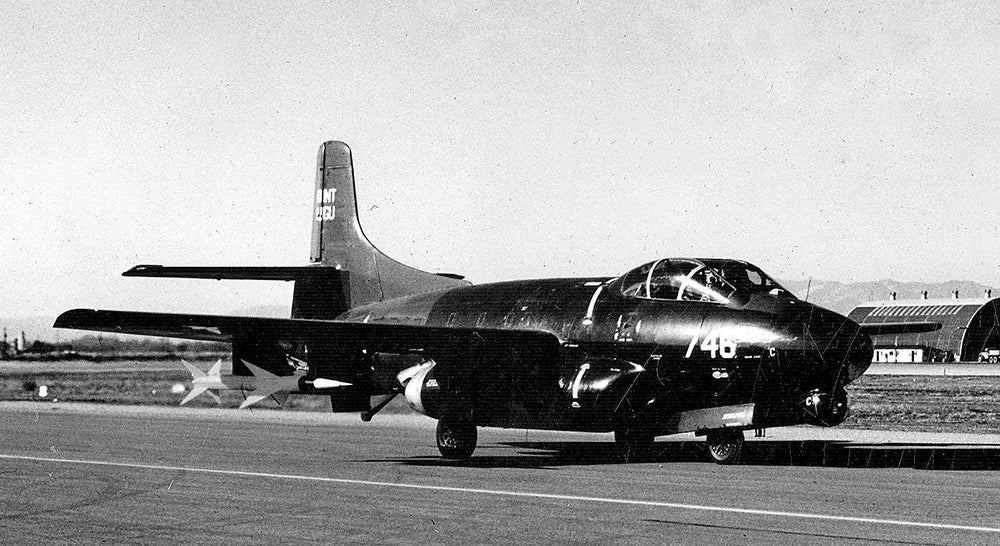
A Douglas F3D-1M Skyknight with an AAM-N-2 Sparrow missile loaded on the wing taxis at Naval Air Missile Test Center (NAMTC) Point Mugu, California on 12 March 1952. (US Navy)
The Skyknight was gradually phased out of service following the Korean War, but it continued to serve as a test platform, most famously during the development of the radar-guided
!!!error: Indecipherable SUB-paragraph formatting!!!
missile. The Skyknight was the first aircraft to be fitted with an operational missile of this type. The Skyknight was also the only Korean War-era jet to see service in Vitenam, where it flew as an electronic warfare platform prior to the introduction of the
!!!error: Indecipherable SUB-paragraph formatting!!!
. Marine Corps Skyknight pilots made history again when they carried out the first airborne radar jamming mission in support of a US Air Force raid on missile sites near Hanoi in 1965. While only 265 Skyknights were produced, they hold an outsized place in Naval aviation history, with the last Skyknight serving until 1970.
!!! UNKNOWN CONTENT TYPE !!!
Short Takeoff
!!! UNKNOWN CONTENT TYPE !!!
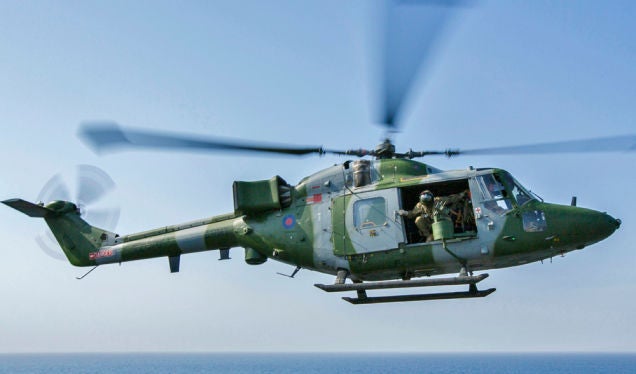
US Navy
March 21, 1971 – The first flight of the Westland Lynx, a multi-purpose helicopter designed and built by Westland Helicopters in England as a replacement for the !!!error: Indecipherable SUB-paragraph formatting!!! and !!!error: Indecipherable SUB-paragraph formatting!!! . Originally built as a utility helicopter for both civilian and military use, the Lynx was further developed into armed gunship and antisubmarine warfare (ASW) variants. The Lynx served with the British Army from 1971-2018, and was retired from Royal Navy service in 2017. It remains in service with Germany, France, and Denmark, as well as other export countries. Still in production, more than 450 have been built to date, and they have seen action in the Iraq War and in Afghanistan.
!!! UNKNOWN CONTENT TYPE !!!
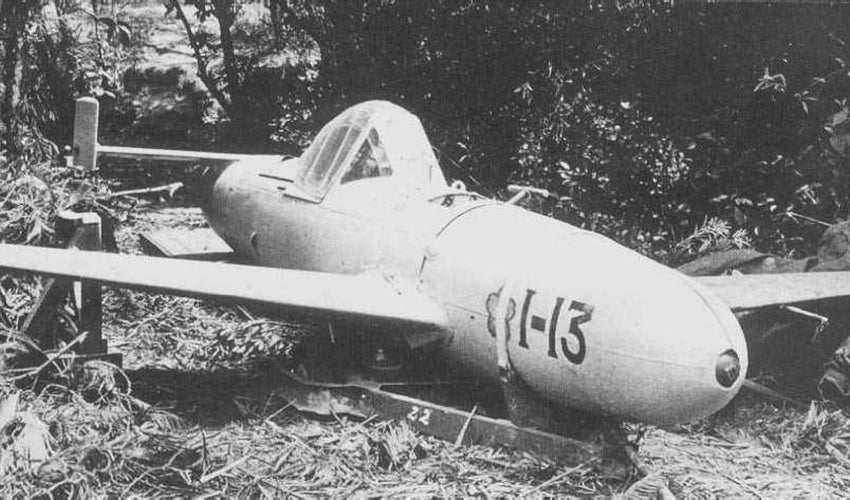
US Department of Defense
March 21, 1945 – The first operational mission of the Yokosuka MXY-7 Ohka piloted bomb. Its name meaning “cherry blossom,” the Ohka was a piloted, rocket-powered flying bomb that was used against Allied shipping in the closing stages of WWII. The flying bomb was usually carried aloft by a !!!error: Indecipherable SUB-paragraph formatting!!! “Betty” bomber, then released to glide towards its target. Once directed at a ship, the pilot lit the rocket motors and dove on the target. Created to be flown by the Japanese !!!error: Indecipherable SUB-paragraph formatting!!! , better known as !!!error: Indecipherable SUB-paragraph formatting!!! , the Ohka had a 2,646-pound !!!error: Indecipherable SUB-paragraph formatting!!! warhead and made its first appearance during the Battle of Okinawa. While most were shot down while still attached to their motherships, the destroyer !!!error: Indecipherable SUB-paragraph formatting!!! (DD-733) was sunk on April 12th, 1945. However, the effect of the Okha was negligible, and no capital ships were ever sunk. The final Ohka mission took place on June 22, 1945.
!!! UNKNOWN CONTENT TYPE !!!
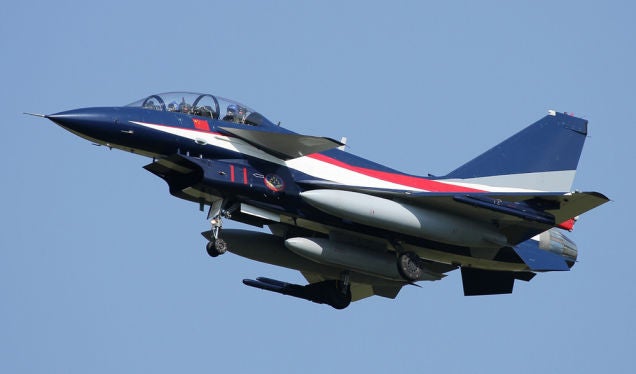 !!!CAPTION ERROR: MAY BE MULTI-LINE OR CONTAIN LINK!!!
!!!CAPTION ERROR: MAY BE MULTI-LINE OR CONTAIN LINK!!!
March 23, 1998 – The first flight of the Chengdu J-10,
a lightweight, all-weather, multirole fighter developed and produced by China’s
!!!error: Indecipherable SUB-paragraph formatting!!!
. The fighter features a delta wing and forward canard and bears a strong resemblance to the
!!!error: Indecipherable SUB-paragraph formatting!!!
, though it is powered by only a singe engine. In performance capability, the J-10 is comparable to the
!!!error: Indecipherable SUB-paragraph formatting!!!
and the
!!!error: Indecipherable SUB-paragraph formatting!!!
. Pakistan is the sole international customer for the J-10, though Iran has expressed an interest in the fighter as well. A total of 400 J-10s have been produced to date.
!!! UNKNOWN CONTENT TYPE !!!
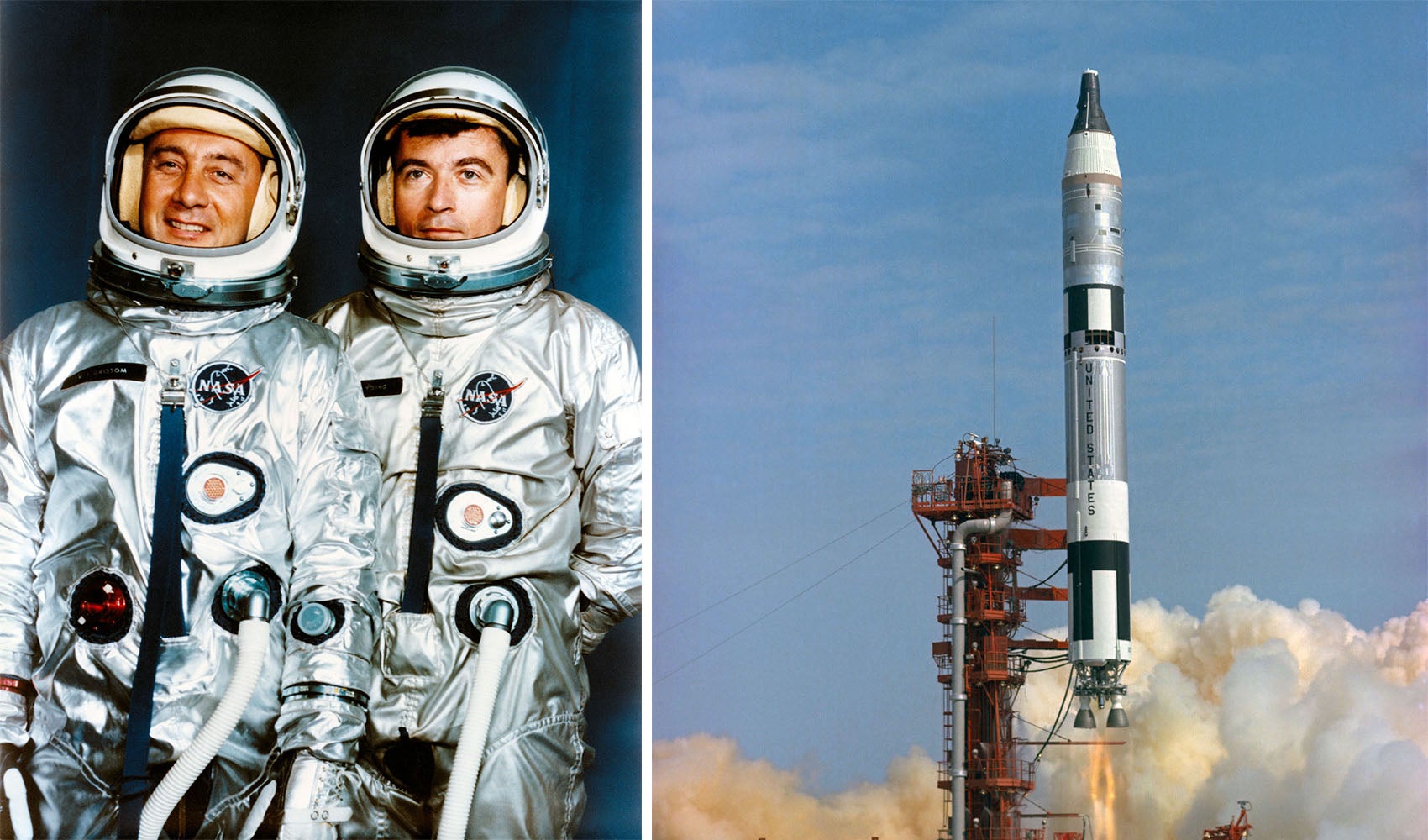
Astronauts Virgil “Gus” Grissom and John Young (NASA)
March 23, 1965 – The launch of Gemini 3. Gemini 3 was the third launch of the two-man Gemini program, and the first to carry astronauts into space. After launch, the crew of !!!error: Indecipherable SUB-paragraph formatting!!! and !!!error: Indecipherable SUB-paragraph formatting!!! made three orbits of the Earth, reaching an altitude of 139.3 miles at !!!error: Indecipherable SUB-paragraph formatting!!! . The mission was designed to test the maneuverability of the new Gemini spacecraft, and the crew used onboard thrusters to alter the craft’s altitude during flight for the first time. On splashdown, an error in wind tunnel testing caused the capsule to miss its landing point by 45 miles, and the astronauts had to wait 30 minutes for pickup. Grissom died in 1967 in a launchpad fire during a test of !!!error: Indecipherable SUB-paragraph formatting!!! , but Young went on to a long career with NASA, and served as the commander of the first two flights of the !!!error: Indecipherable SUB-paragraph formatting!!! .
!!! UNKNOWN CONTENT TYPE !!!
Connecting Flights
!!! UNKNOWN CONTENT TYPE !!!
!!! UNKNOWN CONTENT TYPE !!!
!!! UNKNOWN CONTENT TYPE !!!
!!! UNKNOWN CONTENT TYPE !!!
!!! UNKNOWN CONTENT TYPE !!!
If you enjoy these Aviation History posts, please let me know in the comments. And if you missed any of the past articles, you can find them all at
!!!error: Indecipherable SUB-paragraph formatting!!!
. You can also find more stories about aviation, aviators and airplane oddities at
!!!error: Indecipherable SUB-paragraph formatting!!!
.
!!! UNKNOWN CONTENT TYPE !!!
 Party-vi
> ttyymmnn
Party-vi
> ttyymmnn
03/23/2018 at 12:38 |
|
Hello I enjoy these posts.
 ttyymmnn
> Party-vi
ttyymmnn
> Party-vi
03/23/2018 at 12:56 |
|
Hello, and thanks for still reading after all these years.
 The Compromiser
> ttyymmnn
The Compromiser
> ttyymmnn
03/26/2018 at 18:47 |
|
I object. There was no mention of Saabs in this entire article. What did Berang do to the real ttyymmnn
 ttyymmnn
> The Compromiser
ttyymmnn
> The Compromiser
03/26/2018 at 20:10 |
|
Well, not in this article. Perhaps there’s one coming up soon, I don’t know.